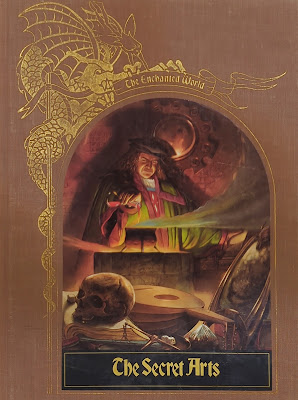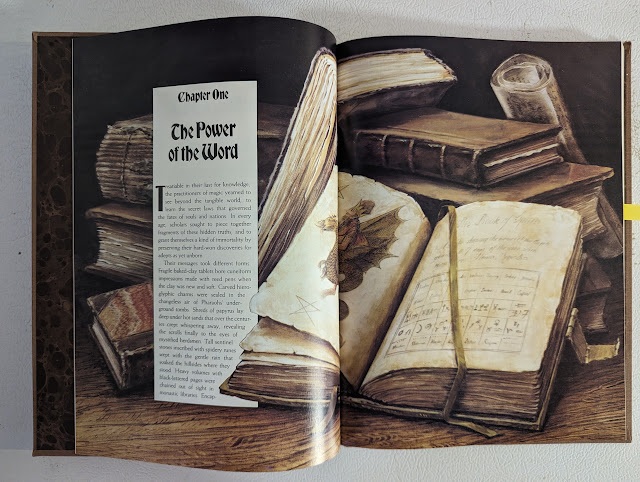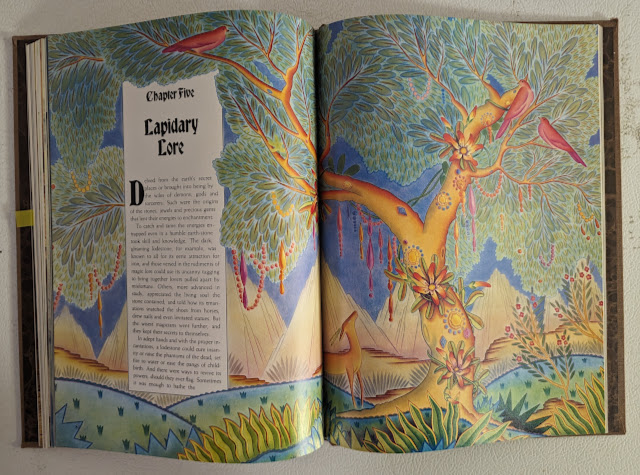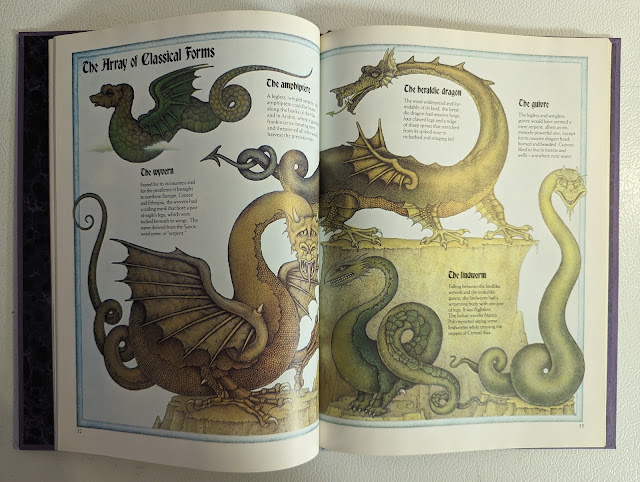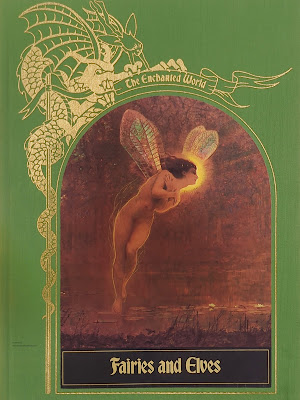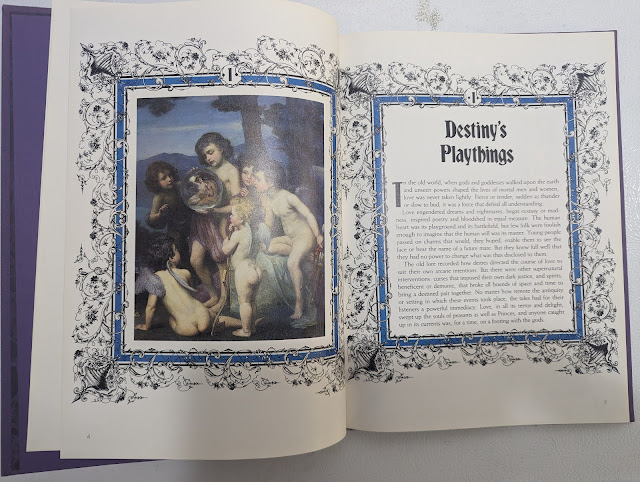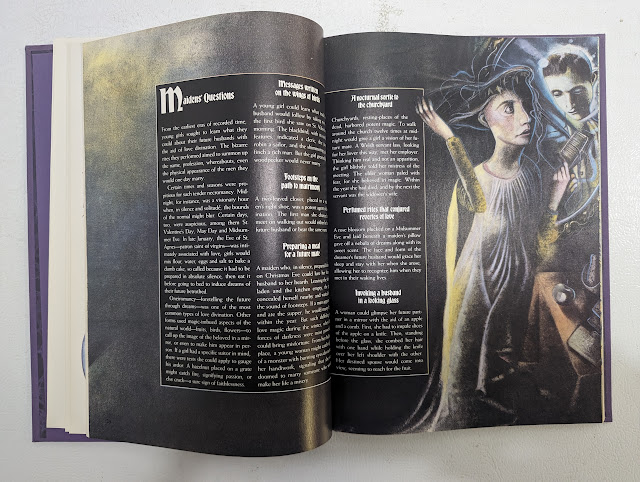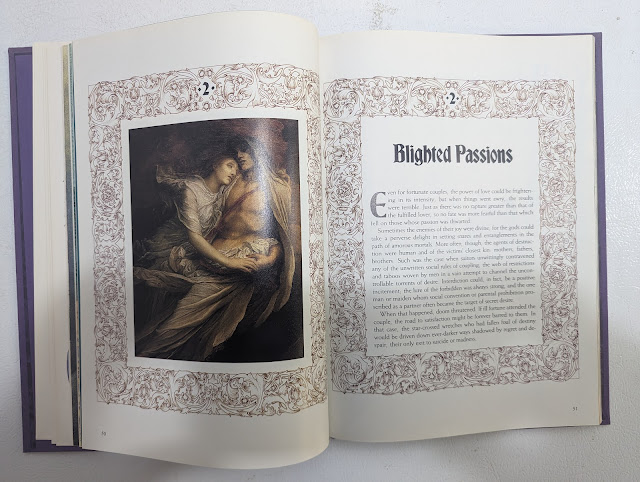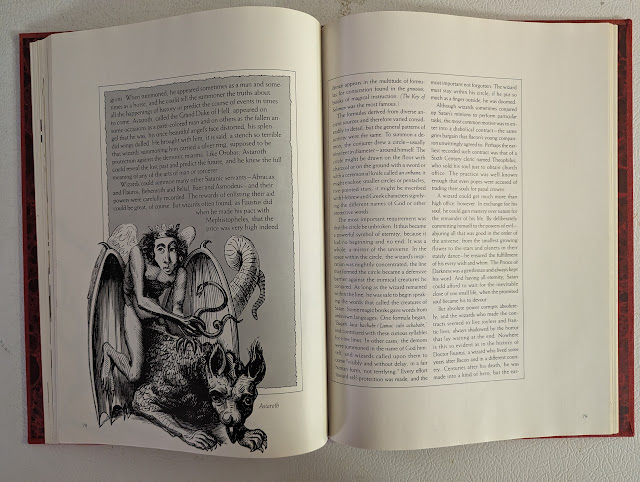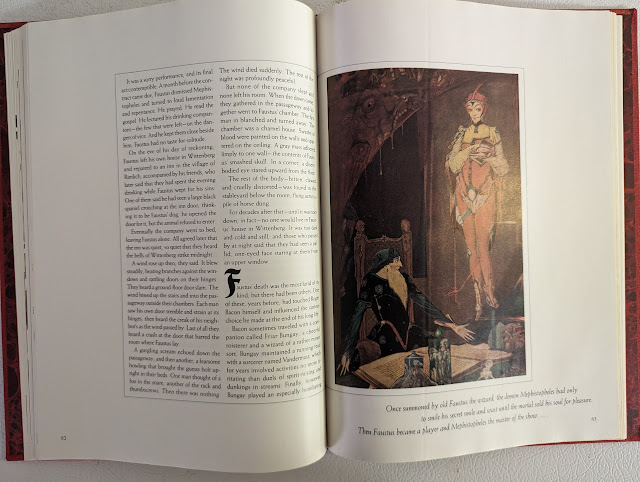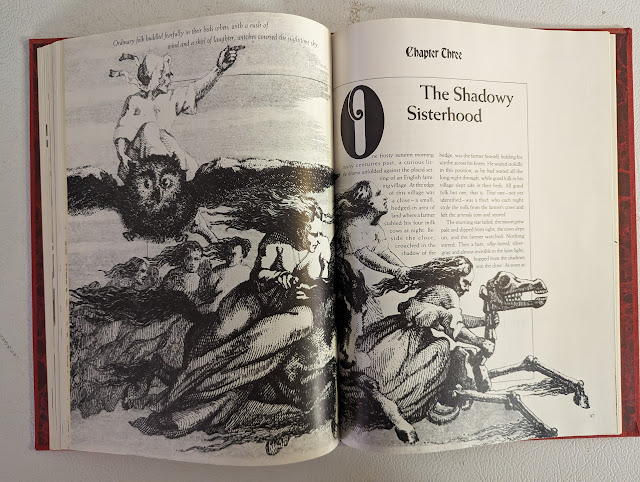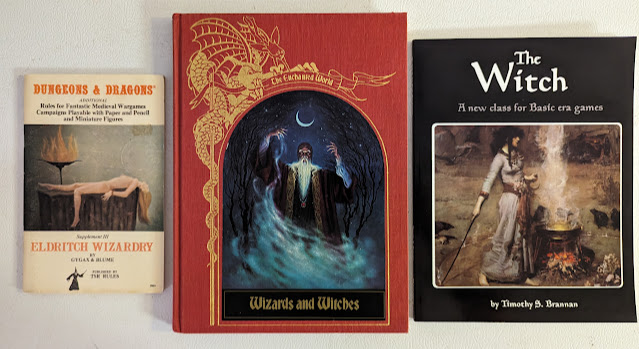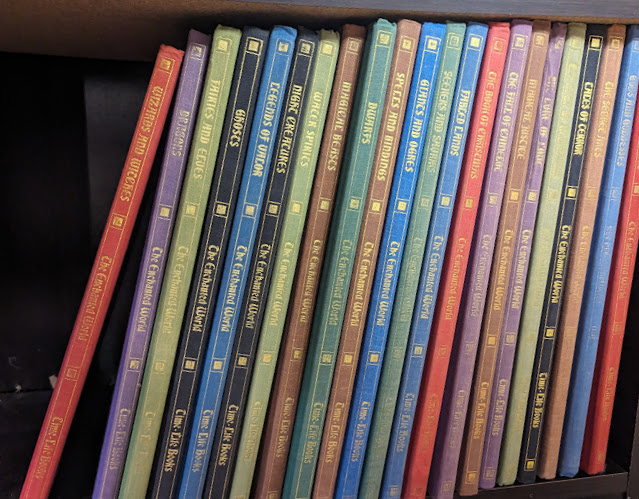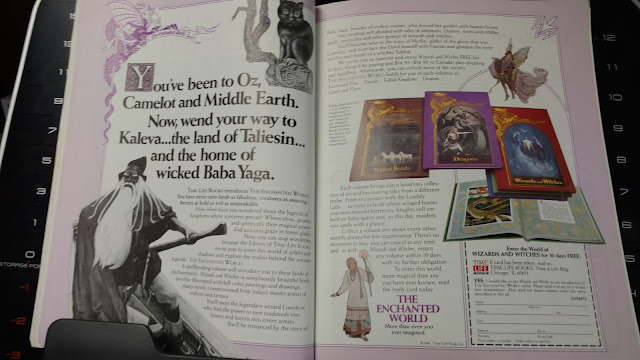There are three books in the Enchanted World series that would be good for Halloween, but given my October Horror Movie Challenge is all about the monsters of my youth, this one is the most appropriate.
Night Creatures
by Editors of Time-LIFE Books, 1985 (141 pages)
ISBN 0809452332, 0809452340 (US Editions)
This one is also divided into four chapters.
Chapter One: Perilous Paths through the Dark
We start out with a tale of Beowulf and Grendel, though from the point of view of Grendel and how it roamed the lands of Denmark for countless years at night. I am struck by the similarities between Grendel and Gollum to be honest. It also make Grendel's Mother seem more like some sort of Hag as well. It has a similar description to the Black Annis featured later in this chapter. A connection I have often explored.
We switch to tales of Nyx, and vampire bats, Hecate, and other creatures of the night. This chapter covers all sorts of night creatures. There is even a bit on Trows, which would have been great to have back in 1985.
A Reckoning with the Fianna's Ancient Bane is the story of a young Fionn MacCumhal slaying a shadow creature on Samhain.
Chapter Two: Visitations from the Realm of Shadow
These creatures are the returned dead and ones from beyond the world of mortals. Smoke like ghosts and spirits and other minor phantasms to returned corpses bent on murder. The Night Hag, or Nočnitsa, of Eastern Europe plagued children at night threating to eat them. Their favorite meal was new born babies. Similar creatures were found in Scotland.
There was also the Dream Lover, the Mara, who prefered to feed on men. All these creatures though are harmless compared to the mother of demons, Lilith. Though I don't think Lilith was ever a blonde.
Even young women had to fear the dead's return with dream lovers of their own coming back to claim them as their brides.
Chapter Three: Blood Feasts of the Damned
Vampires are found in the myths and tales of every culture. Tales from Iraq, Greece, Germany, Scotland, the Ukraine, and more are detailed. Along with the various guises of the vampire.
As varied as the vampires are all over the world, so are the means in which to dispatch them. A stake in the heart for some, an iron stake in the forehead for others. Sunlight for most.
All of these creatures seek the blood of the living and often, the blood of those they loved.
This vampire chapter might some of the most well known material in the series to be honest.
Chapter Four: The Way of the Werebeast
It is possible that shape-shifting humans to animals are the oldest sorts of monsters we know. Far more ubiquitous than ghosts, night hags or even vampires, the lycanthrope or werebeast is know all over the world.
Werewolves seem to be the most feared of Europe, likely due to the fear of wolves. In other parts of the world where other large predators live we find other werebeasts. In Scandinavia warriors would don bear skins and fly into a rage. We get the word berserker from this meaning "bear shirt." Likewise men of the Volsung clan would do the same with wolf skins. There is a bit here about shamans, but I wanted more.
In Japan the tales were a little different with wise creatures taking on the form of humans, or at least human like. There were also women who could transform into foxes.
I am a little surprised there wasn't a significant amount of text on some of the shape-shifting monsters of India. But when you share a chapter with werewolves, werebears, and fox-women, expect lower billing. If any at all.
Many of these tales are well know to anyone who has played RPGs, especially any horror RPGs. But a few might be new. Still I find little tidbits of information here and there that are wonderful to have. I must investigate the nočnitsa some more, and I am certainly going to revisit my own take on Trows.
One thing that gets lost in the vampire and werewolf love of the last two chapters is all the varieties of hags mentioned here. Grendel's mother, night hags, mara, Lilith. Just great stuff honestly. Again, I should go back and challenge my notions on my Lilim demons.
I also noticed how much this book looked like a Ravenloft book from the AD&D 2nd Ed era. Could be coincidence, but at one point I had this sitting on my freezer to take pictures and I had to double take to make sure it was not my Realms of Terror book. Too bad they are such odd sizes. I would buy and extra one and put it on my shelf of Ravenloft books.
This reminds me I really need to get back to covering these books.













